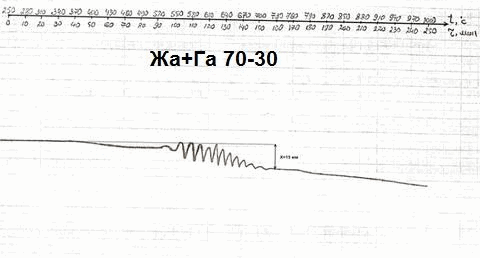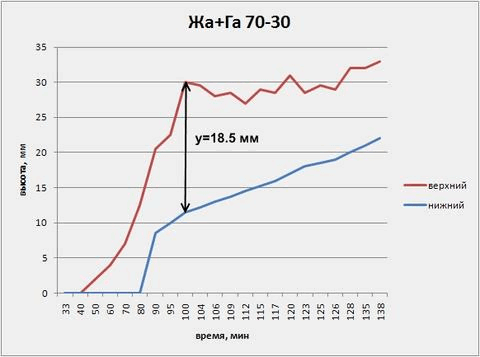

Relevance of the topic. Current conditions of coal provision of coke enterprises of Ukraine are characterized by an insufficient number of low-sulfur and coking charge components for coking. On the Ukrainian market there is a constant shortage of quality and low sulfur coking coal of own production. This is due to the fact that the resource base of Donbas, Ukraine as a whole, is characterized by a low content of low-sulfur coals of such grades as F, G and OC. This increases the percentage extraction of weakly sintered and not sintered sulfur coal, which dominate in our country [1].
Such a way actual is the problem of obtaining high-quality coke from an existing coal resource base and on the basis of the existing coking technology that can be realized through the development of best management options for making coal charge and the possible use in their different organic additives.
The aim of work – study of cokes received on the basis charges using sulfur coal and additive materials influencing in the process of thermal destruction.
Tasks of work:
The object of research are charges of the coal mines of the Donetsk Basin Central and Zasyadko with various combinations of components low-reduced (Glrc, Flrc) and reduced (Frc) types.
Scientific importance is the study of qualitative performance of coke from the charges with sulfur coal and using different organic additives.
The practical value of the work consists in expansion of resource base through the use of coke in charges of sulfur coals of Donbas and waste of coke chemical production to produce high quality coke.
Study of charges and coals are conducted by plastometric method (State Standard 1186–87). Determination of strength of cokes was performed by head frame method (State Standard 5953–81). Determination of total sulfur was carried out by the method Eshka (State Standard 8606–93).
As additives azobisisobutyronitrile (AIBN) were injected to initiate radical polymerization processes, coal tar pitch, expanded polystyrene (EPS), polyethylene terephthalate (PETF), phenols.
Table 1 – shows the characteristics of the coal.
Table 1 – Characteristic of initial coals.
| Mine | Sort of , coal, bed |
Type | Technical analysis, % | Elemental analysis, % daf | |||||
| Wr | Ad | Sdt | Vdaf | C | H | O+N | |||
| Central | G, k7 | lrc | 2,2 | 5,2 | 1,22 | 36,0 | 85,1 | 5,11 | 8,71 |
| Zasyadko | F, l4 | lrc | 1,4 | 2,6 | 1,09 | 31,6 | 87,8 | 5,16 | 4,8 |
| Zasyadko | F, k8 | rc | 1,3 | 2,6 | 4,1 | 30,5 | 85,4 | 5,2 | 5,3 |
As it can be seen from the table, coal reduced type (rc) have higher sulfur content comparing with low-reduced coals. type (lrc).
Analysis of data received during investigation of charges, describing the course of gas evolution during pyrolysis showed that the curves for blend Frc: Glrc with a component ratio of 50:50% is not changed when adding a AIBN. However, there is intensification of processes of gas evolution with a typical increasing frequency of the peaks, which indicates an increase the number of released fluidities pyrolysis products that are responsible for the processes of sintering of the charge components.

Picture 3 — Plastometric curves for the charges.

Picture 4 — Graphs of the thickness of the plastic layer to the charges.
The results are shown in Table 2 and 3.
Table 2 – Plastometric indices of charges..
| Charge | Fixed residue, % |
Thickness of plastic layer y, mm |
Plastometric shrink x, mm |
| Жа:Га,70:30 | 72,33 | 18,5 | 15 |
| Flrc:Glrc,70:30 | 73,20 | 20,0 | 20 |
| Frc:Glrc,50:50 | 72,30 | 13 | 31 |
| Frc:Glrc,50:50 + 5% AIBN |
69,20 | 15,5 | 37 |
| Frc:Glrc,50:50 + 5% pitch |
72,60 | 15,5 | 33 |
| Frc:Glrc,50:50 + 5% EPS |
69,90 | 10 | 52 |
| Frc:Glrc,50:50 + 5% PETF |
71,30 | 11,5 | 36 |
| Frc:Glrc,50:50 + 5% phenols |
69,7 | 14 | 39 |
The table shows that the use of reduced fat coals in coke charge (Frc:Glrc, 70:30) leads to a significant increase in the thickness of the plastic layer, the values plastometric shrinkage and output of coke as compared with the charges, consisting of low-sulfur components (Flrc:Glrc, 70:30).
Introduction 5% additive AIBN, as well as pitch to the charges Frc:Glrc 50:50 increases the thickness of the plastic layer and thus increases the ability of the charge components to caking.
Table 3 – Performance of the strength of coke and the total sulfur content
| Coke from a charge |
Strength Index S, Dzh/dm2 |
Abradability A, % |
Resistance to crushing P, % |
Total sulfur Sdt, % |
| Flrc:Glrc,70:30 | 78,16 | 24,0 | 51,6 | 0,79 |
| Frc:Glrc,70:30 | 88,29 | 19,0 | 61,1 | 1,72 |
| Frc:Glrc,50:50 | 67,3* | 21,0 | 52,5 | 1,41 |
| Frc:Glrc,50:50 + 5% AIBN |
66,8* | 20,6 | 52,9 | 1,56 |
| Frc:Glrc,50:50 + 5% pitch |
72,6 | 19,4 | 56,1 | – |
| Frc:Glrc,50:50 + 5% EPS |
64,5* | 24,9 | 46,7 | – |
| Frc:Glrc,50:50 + 5% PETF |
69,2* | 22,6 | 50,4 | – |
| Frc:Glrc,50:50 + 5% phenols |
69,6* | 20,5 | 53,4 | – |
The data presented in Table 3, show to a sharp increase in the strength characteristics of coke from a charge with a ratio of the components 70:30 at replacement the fat coal type (lrc) the type (rc). 50:50 blend also has performance A and P, the best in comparison with the charge Flrc:Glrc, 70:30. AIBN additive leads to a decrease of abradability by about the same value of resistance to crushing. Additive pitch considerably improves strength properties of coke.
The results suggest the possibility of decrease the share of good homogeneous components in the charge and the ability to manage the process of transition coals to the plastic state by introducing a special organic additives.
It is possible to use waste of coke production as an additive to coal charge for coking.
It is obvious that it is necessary to integrate of genetic type of reduction at compounding of charges for coking.